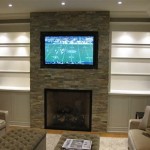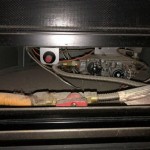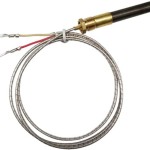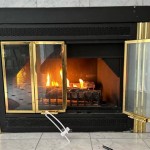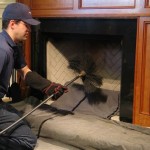```html
Sandstone Fireplace Sealer: Protecting and Preserving Your Fireplace
Sandstone fireplaces offer a unique aesthetic appeal, bringing warmth and natural beauty to any living space. However, sandstone is a porous material, making it susceptible to staining, water damage, and deterioration over time. Applying a suitable sandstone fireplace sealer is crucial for maintaining its appearance, extending its lifespan, and preventing costly repairs. This article provides comprehensive information about sandstone fireplace sealers, their application, and the benefits they offer.
Understanding Sandstone and its Porosity
Sandstone is a sedimentary rock composed primarily of sand-sized grains of minerals, rock fragments, or organic material. These grains are cemented together by various minerals, such as silica, calcium carbonate, or iron oxide. The composition and texture of sandstone vary depending on its origin, resulting in a range of colors, patterns, and densities. The interconnected spaces between the sand grains create pores within the sandstone, making it a porous material. This porosity allows liquids, such as water, oil, and soot, to penetrate the stone, leading to staining, discoloration, and eventual degradation.
The extent of porosity in sandstone varies depending on factors such as grain size, cementation, and compaction. Some types of sandstone are more porous than others, requiring more frequent sealing or a more robust sealant. Understanding the specific porosity of the sandstone used in a fireplace is essential for selecting the appropriate sealer and application method.
Unsealed sandstone readily absorbs moisture, which can cause several problems. Water penetration can lead to efflorescence, a white, powdery deposit on the surface of the stone caused by the migration of soluble salts. Repeated cycles of freezing and thawing can cause the water within the pores to expand and contract, leading to cracks, spalling, and eventual structural damage. Furthermore, absorbed moisture can create a breeding ground for mold and mildew, which can stain the stone and pose health risks.
Types of Sandstone Fireplace Sealers
Various types of sandstone sealers are available, each with its own properties and advantages. The selection of the appropriate sealer depends on several factors, including the type of sandstone, the desired aesthetic effect, and the level of protection required. Sealers can be categorized into two main types: penetrating sealers and topical sealers.
Penetrating Sealers: These sealers penetrate the surface of the sandstone and create a barrier within the pores, preventing the absorption of liquids. They typically do not alter the appearance of the stone, preserving its natural texture and color. Penetrating sealers are often preferred for sandstone fireplaces because they allow the stone to breathe, preventing moisture buildup and potential damage from trapped vapor. Common types of penetrating sealers include:
- Silane/Siloxane Sealers: These sealers are water-based and offer excellent water repellency. They chemically bond with the silica in the sandstone, creating a durable and long-lasting barrier. Silane/siloxane sealers are breathable and do not alter the appearance of the stone.
- Fluoropolymers: These sealers provide superior protection against oil, grease, and stains. They are more expensive than silane/siloxane sealers but offer enhanced durability and resistance to chemical attack. Fluoropolymers are often used in areas prone to heavy staining or spills.
- Acrylic Sealers (Penetrating): Some acrylic sealers are designed to penetrate the sandstone. These may offer some stain resistance but often provide less breathability than silane/siloxane options.
Topical Sealers: These sealers form a protective film on the surface of the sandstone, creating a barrier against liquids and stains. Topical sealers can alter the appearance of the stone, adding a gloss or sheen. While they offer excellent protection, they can also trap moisture within the sandstone, potentially leading to damage over time. Topical sealers are generally not recommended for sandstone fireplaces due to their lack of breathability. Common types of topical sealers include:
- Acrylic Sealers (Topical): These sealers provide a glossy or matte finish and offer good stain resistance. However, they are not breathable and can trap moisture.
- Polyurethane Sealers: These sealers are durable and resistant to abrasion and chemicals. They provide a high-gloss finish and are not recommended for sandstone fireplaces.
When selecting a sandstone fireplace sealer, it is crucial to consider the manufacturer's recommendations and the specific properties of the stone. Testing the sealer on a small, inconspicuous area of the fireplace before applying it to the entire surface is always recommended to ensure compatibility and desired results.
Preparing the Sandstone Fireplace for Sealing
Proper preparation is essential for ensuring the effectiveness and longevity of the sandstone fireplace sealer. Thoroughly cleaning the sandstone surface removes dirt, dust, soot, and any existing coatings that could interfere with the sealer's adhesion and performance. The preparation process typically involves the following steps:
- Cleaning: Remove loose debris, dust, and soot with a brush or vacuum cleaner. Wash the sandstone surface with a mild detergent and water, using a soft-bristled brush to scrub away any stubborn stains. Rinse thoroughly with clean water and allow the stone to dry completely. Avoid using harsh chemicals or abrasive cleaners, as they can damage the sandstone.
- Stain Removal: Address any existing stains before applying the sealer. Various stain removal products are available, depending on the type of stain. Follow the manufacturer's instructions carefully and test the product on a small, inconspicuous area first. For stubborn stains, consider consulting a professional stone cleaner.
- Efflorescence Removal: If efflorescence is present, remove it with a stiff brush and a solution of water and white vinegar (1:1 ratio). Rinse thoroughly with clean water and allow the stone to dry completely. In severe cases, a specialized efflorescence remover may be necessary.
- Repairing Cracks and Damage: Repair any cracks or damage to the sandstone before sealing. Use a compatible patching compound or mortar to fill the cracks and smooth the surface. Allow the patching compound to cure completely before proceeding with sealing.
- Drying: Ensure the sandstone is completely dry before applying the sealer. Moisture trapped within the stone can prevent the sealer from properly bonding and can lead to discoloration or damage. Use a moisture meter to check the moisture content of the sandstone, ensuring it is within the manufacturer's recommended range. Allow adequate drying time, typically 24-48 hours, depending on the environmental conditions.
Once the sandstone is clean, dry, and repaired, it is ready for sealing. Follow the manufacturer's instructions carefully when applying the sealer, ensuring even coverage and proper penetration.
Applying the Sandstone Fireplace Sealer
The application process for sandstone fireplace sealers varies depending on the type of sealer and the manufacturer's recommendations. However, some general guidelines apply to most sealers:
- Testing: Before applying the sealer to the entire fireplace, test it on a small, inconspicuous area to ensure compatibility and desired results. Allow the test area to dry completely and observe any changes in color or texture.
- Application Method: Apply the sealer using a brush, roller, or sprayer, depending on the manufacturer's recommendations. Ensure even coverage and avoid applying too much sealer, as this can lead to a buildup on the surface. For penetrating sealers, apply enough sealer to saturate the stone but avoid creating puddles.
- Number of Coats: The number of coats required depends on the porosity of the sandstone and the manufacturer's recommendations. Typically, two coats are sufficient for most sandstones. Allow the first coat to dry completely before applying the second coat.
- Drying Time: Allow the sealer to dry completely before using the fireplace. The drying time varies depending on the type of sealer and the environmental conditions. Follow the manufacturer's recommendations for drying time.
- Ventilation: Ensure adequate ventilation during and after application. Open windows and doors to allow fresh air to circulate.
It is important to wear appropriate protective gear, such as gloves and eye protection, when applying sandstone fireplace sealers. Avoid contact with skin and eyes, and follow all safety precautions outlined by the manufacturer.
Maintaining a Sealed Sandstone Fireplace
Maintaining a sealed sandstone fireplace involves regular cleaning and periodic resealing. Regular cleaning removes dirt, dust, and soot, preventing them from penetrating the sealed surface and causing stains. Resealing replenishes the protective barrier and ensures continued protection against water damage and staining.
Cleaning: Clean the sealed sandstone fireplace regularly with a mild detergent and water. Use a soft cloth or sponge to wipe down the surface, avoiding abrasive cleaners or scrubbing pads that can damage the sealer. Rinse thoroughly with clean water and allow the stone to dry completely.
Resealing: The frequency of resealing depends on the type of sealer used, the level of usage, and the environmental conditions. Generally, sandstone fireplaces should be resealed every 3-5 years. Inspect the sealed surface regularly for signs of wear or damage, such as fading, scratches, or water penetration. If signs of wear are evident, resealing may be necessary sooner.
To reseal the sandstone fireplace, clean the surface thoroughly as described above. Allow the stone to dry completely and then apply a fresh coat of sealer, following the manufacturer's instructions. Testing the new sealer on a small, inconspicuous area first is always recommended.
Proper sealing and maintenance are essential for preserving the beauty and longevity of a sandstone fireplace. By understanding the properties of sandstone, selecting the appropriate sealer, and following the recommended application and maintenance procedures, homeowners can enjoy the warmth and elegance of their sandstone fireplace for years to come.
```
Natural Stone Fireplaces Maintenance Tips And Suggestions

How To Seal A Stone Fireplace Hearth Old World Stoneworks

Sandstone Tile Sealer Best Driveway Elite Coatings

Sandstone Fireplace Cleaning Sydney Sealing Unikastone

Ltp Mattstone Sealer Cast Fireplaces

Interior Stone Sealer Invisible Clear Wall And Brick

How To Seal A Stone Fireplace Hearth Old World Stoneworks

York Blend Sandstone Hearth 600 X 900 22mm Melton Stone

Oxford Green Sandstone Hearth 1200 X 400 40mm Melton Stone

Sealing Split Stone Natural Edge Hearth
Related Posts



